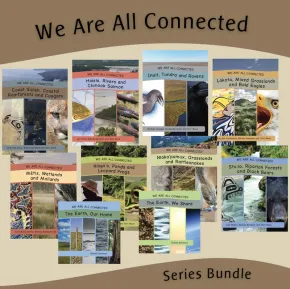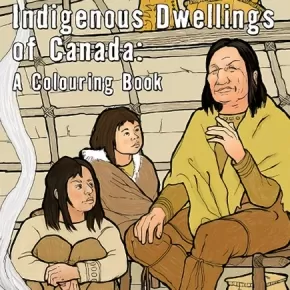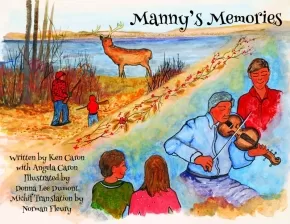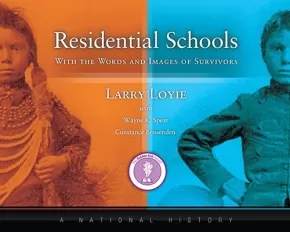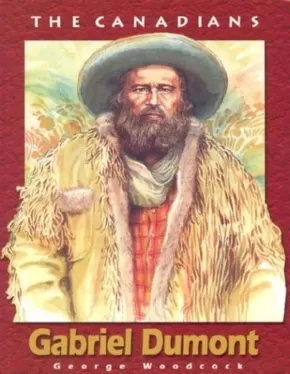
Métis
31
-
42
of
42 Results;
Sort By
Go To
of 3
Strong Stories Métis: Métis and Dandelions
 $9.95
$9.95

Artists:
Format:
Paperback
Text Content Territories:
Indigenous Canadian; Métis;
ISBN / Barcode: 9781771743150
Synopsis:
Synopsis:
Both the Métis people and dandelions have great resiliency in their ability to survive. They both have similar characteristics. What is it about dandelions that makes them strong and resilient?
Educator & Series Information
Recommended for intermediate students (grades 4-6).
Métis and Dandelions is part of the Strong Stories: Métis series. Strong Stories focus on different First Nation territories from across Canada and the United States. These stories reflect the belief that our stories are the roots of our people, our lands and our cultures. It is from our stories that we grow and become strong and proud.
Additional Information
16 pages | 6.00" x 9.00" | ISBN: 9781771743150
Strong Stories Métis: Métis Singing Sticks: A Story About Métis Musical Traditions
$9.95
Artists:
Format:
Paperback
Text Content Territories:
Indigenous Canadian; Métis;
ISBN / Barcode: 9781771743167
Synopsis:
Synopsis:
Métis Singing Sticks are more than musical instruments, they are also special family time spent together. Join Leah as she shares a family story. What is a special family time that your family has?
Educator & Series Information
Recommended for intermediate students (grades 4-6).
A Story About Métis Musical Traditions is part of the Strong Stories: Métis series. Strong Stories focus on different First Nation territories from across Canada and the United States. These stories reflect the belief that our stories are the roots of our people, our lands and our cultures. It is from our stories that we grow and become strong and proud.
Additional Information
16 pages | 6.00" x 9.00" | ISBN: 9781771743167
Strong Stories Métis: Pemmican Berries
 $9.95
$9.95

Artists:
Format:
Paperback
Text Content Territories:
Indigenous Canadian; Métis;
ISBN / Barcode: 9781771743181
Synopsis:
Synopsis:
Long ago, pemmican was a staple food for Métis people. At that time, it was made with dried and crushed buffalo meat mixed with grease and dried berries. Pemmican could last through the winter months in storage. What is a type of food that you know of that can last a long time?
Educator & Series Information
Recommended for intermediate students (grades 4-6).
Pemmican Berries is part of the Strong Stories: Métis series. Strong Stories focus on different First Nation territories from across Canada and the United States. These stories reflect the belief that our stories are the roots of our people, our lands and our cultures. It is from our stories that we grow and become strong and proud.
Additional Information
16 pages | 6.00" x 9.00" | ISBN: 9781771743181
Strong Stories Métis: Poems to Honour Mother Earth
 $9.95
$9.95

Artists:
Format:
Paperback
Text Content Territories:
Indigenous Canadian; Métis;
ISBN / Barcode: 9781771743198
Synopsis:
Synopsis:
Leah Marie Dorion’s poetry reflects her deep connection to Mother Earth, which she has had since she was a child. Each poem gently recognizes all that is around us and the importance of being respectful. What is one way that you show respect to Mother Earth?
Educator & Series Information
Recommended for intermediate students (grades 4-6).
Poems to Honour Mother Earth is part of the Strong Stories: Métis series. Strong Stories focus on different First Nation territories from across Canada and the United States. These stories reflect the belief that our stories are the roots of our people, our lands and our cultures. It is from our stories that we grow and become strong and proud.
Additional Information
16 pages | 6.00" x 9.00" | ISBN: 9781771743198
Strong Stories Métis: The Story of the Tamarack Tree
 $9.95
$9.95

Artists:
Format:
Paperback
Text Content Territories:
Indigenous Canadian; Métis;
ISBN / Barcode: 9781771743211
Synopsis:
Synopsis:
Creator advised us not to compare ourselves to each other. We all have a special place within the circle of life. What do you think happens when Tamarack seeks the attention of the Muskeg people?
Educator & Series Information
Recommended for intermediate students (grades 4-6).
The Story of the Tamarack Tree is part of the Strong Stories: Métis series. Strong Stories focus on different First Nation territories from across Canada and the United States. These stories reflect the belief that our stories are the roots of our people, our lands and our cultures. It is from our stories that we grow and become strong and proud.
Additional Information
16 pages | 6.00" x 9.00" | ISBN: 9781771743211
The Orange Shirt Story
$19.99
Artists:
Format:
Paperback
Text Content Territories:
Indigenous Canadian; First Nations; Salish; Interior Salish; Secwepemc (Shuswap); Stswecem'c Xgat'tem;
ISBN / Barcode: 9780993869495
Synopsis:
Synopsis:
When Phyllis Webstad (nee Jack) turned six, she went to the residential school for the first time. On her first day at school, she wore a shiny orange shirt that her Granny had bought for her, but when she got to the school, it was taken away from her and never returned. This is the true story of Phyllis and her orange shirt. It is also the story of Orange Shirt Day (an important day of remembrance for First Nations and non First Nations Canadians).
Reviews
"The book includes a brief history of the Secwepemc people, St. Joseph’s Residential School, and a glossary and conversation starters. A must for elementary school teachers. " - Canadian Indigenous Books for Schools 2020/2021
Educator Information
Recommended for grades 2 to 5.
This resource is also available in French: The Orange Shirt Story (French) / L'histoire Du Chandail Orange
Recommended in the Canadian Indigenous Books for Schools 2020/2021 resource list for grades 1-5 in the areas of English Language Arts, Social Studies, and Career Education.
Additional Information
8.5" x 11" | 44 pages
Speaking Our Truth: A Journey of Reconciliation
$29.95
Format:
Hardcover
Text Content Territories:
Indigenous Canadian;
ISBN / Barcode: 9781459815834
Synopsis:
Synopsis:
Canada's relationship with its Indigenous people has suffered as a result of both the residential school system and the lack of understanding of the historical and current impact of those schools. Healing and repairing that relationship requires education, awareness and increased understanding of the legacy and the impacts still being felt by Survivors and their families. Guided by acclaimed Indigenous author Monique Gray Smith, readers will learn about the lives of Survivors and listen to allies who are putting the findings of the Truth and Reconciliation Commission into action.
Educator Information
Recommended for grades 4 to 8.
A teacher guide for this resource is also available: Speaking Our Truth Teacher Guide
Additional Information
160 pages | 7.50" x 9.00"
We Are All Connected Series Bundle
 $179.55 $199.50
$179.55 $199.50

Text Content Territories:
Indigenous Canadian; First Nations; Salish; Coast Salish; Sto:lo; Interior Salish; Nlaka'pamux (Thompson); Nisga'a; Haisla (Kitamaat); Sioux; Lakota; Inuit; Métis;
ISBN / Barcode: 9781771745963
Synopsis:
Synopsis:
“We Are All Connected” is a series that explores how we all live together in a shared balance upon Mother Earth. Each book explores a specific ecosystem with a focus on one animal and its adaptations for survival within that ecosystem. Indigenous interviewees, each living within the same area, have responded to strategic questions as to how their community interacts with the land, their traditional territory. Explore each text with a sense of inquiry in mind.
8 We Are All Connected Titles Coast Salish, Coastal Rainforests and Cougars Haisla, Rivers and Chinook Salmon Inuit, Tundra and Ravens Lakota, Mixed Grasslands and Bald Eagles Métis, Wetlands and Mallards Nisga'a, Ponds and Leopard Frogs Nlaka'pamux, Grasslands and Rattlesnakes Sto:lo, Riparian Forests and Black Bears Each title covers the following curricular areas. Traditional storytelling and artwork begin each title from the focus Indigenous territory. Science: Biodiversity, classification, life cycles, food chains, food webs and connections between living and non-living things are just some of the science concepts included in each book. Social Studies: Contemporary and historical Indigenous cultural knowledge flows throughout each book. Local land forms, gatherings, harvesting practices and government are some of the social studies concepts included in each book.
2 Foundation Titles The two foundational books provide deeper understanding of the content of the “We Are All Connected” titles. We Are All Connected: The Earth, Our Home- explores biomes, ecosystems and biodiversity. We Are All Connected: The Earth, We Share- explores the interconnectedness between living and non-living things. View: We Are All Connected Learning Intentions
Additional Information
ISBN: 9781771745963
Indigenous Dwellings of Canada: A Colouring Book
$6.95
Artists:
Format:
Paperback
Text Content Territories:
Indigenous Canadian;
Synopsis:
Get ready to have fun and learn at the same time! Explore the many different homes and cultures of Turtle Island’s nations, past and present, throughout Indigenous Dwellings of Canada.
Each beautiful, black-line illustration includes carefully researched commentaries by Katherine and Leo Pettipas. Not only do they tell fun stories, but offer informative glimpses into Canadian history.
This educational colouring book is full of images and tales that will delight students and artists of all ages.
Manny's Memories
$17.50
Artists:
Format:
Paperback
Text Content Territories:
Indigenous Canadian; Métis;
ISBN / Barcode: 9781926795164
Synopsis:
Synopsis:
Manny's Memories, by Author Ken Caron with his daughter Angela Caron, introduces us to the Métis community of Round Prairie, Saskatchewan through the eyes of a young boy growing up in the 1940s. Manny shares his boyhood memories of the once vibrant community not too far from Saskatoon's city limits. Though rural life at the time called for hard work, self-sufficiency, and generosity, there was always time to have fun and to enjoy being a young Métis boy. Artist Donna Lee Dumont's visual expression of Manny's Memories helps us see the world as Ken, called "Manny" in his youth, remembers it. Norman Fleury's accompanying Michif translation and narration returns to the language which Manny often hears as a boy. Manny's Memories leaves us with a rare and satisfying glimpse of life not so long ago.
Educator Information
Grade Level: Primary
Format: Book/CD, English/Michif-Cree
Additional Information
36 pages | 10.94" x 8.46"
Residential Schools, With the Words and Images of Survivors
$34.95
Format:
Hardcover
Text Content Territories:
Indigenous Canadian;
ISBN / Barcode: 9780993937101
Synopsis:
Synopsis:
Residential Schools, With the Words and Images of Survivors, A National History honours the survivors, the former students, who attended residential schools. Designed for the general reader this accessible, 112-page history offers a first-person perspective of the residential school system in Canada, as it shares the memories of more than 70 survivors from across Canada as well as 125 archival and contemporary images (65 black & white photographs, 51 colour, some never before published).
This essential volume written by award-winning author Larry Loyie (Cree), a survivor of St. Bernard Mission residential school in Grouard, AB, and co-authored by Constance Brissenden and Wayne K. Spear (Mohawk), reflects the ongoing commitment of this team to express the truths about residential school experiences and to honour the survivors whose voices are shared in this book.
Along with the voices, readers will be engaged by the evocative, archival photographs provided by the Shingwauk Residential Schools Centre with the assistance of curator Krista McCracken. The book begins with the moving introduction by Larry Loyie, and moves to seven chapters that explore the purpose of this school system; cultures and traditions; leaving home; life at school the half-day system; the dark side of the schools; friendship and laughter coping with a new life; changing world–the healing begins; and an afterword. A detailed, full colour map showing residential schools, timeline with key dates, glossary, and a helpful index (including names of survivors and schools) make this vital resource a must-have for secondary, college, and universities, libraries, and the general reader.
Reviews
"A broad and comprehensive review of the history of First Nations, Métis, and Inuit peoples in Canada told from the perspective of First Peoples in a very accessible way. Any educator, regardless of personal background or heritage, would find this timely resource very useful in any classroom." — Gary Fenn and Domenic Bellissimo, executive assistants, Ontario Secondary School Teachers’ Federation
"Written with a gentle hand, this book describes a history that few Canadians understand or even know about. From the first page, those in search of the truth are engaged in a journey of learning, as they come to understand the true battle of Aboriginal peoples to preserve their cultures and pride. This story is a true account of resiliency and human spirit." — Tracy Zweifel, executive director, Sagitawa Friendship Society, Alberta
Awards
- 2016 Winner of Golden Oak award in Ontario's Forest of Reading program
Educator Information
This must-have resource includes a detailed, full-colour map showing residential schools, a timeline with key dates, and a glossary.
Recommended for grades 7-12, but would still be useful for adults and college/university courses studying residential schools and Indigenous history.
This book has been evaluated and approved by ERAC (Educational Resource Acquisition Consortium, British Columbia).
Additional Information
112 pages | 10.43" x 8.26"
Gabriel Dumont (2 In Stock) - ON SALE
$10.36 $12.95
Format:
Paperback
Text Content Territories:
Indigenous Canadian; Métis;
ISBN / Barcode: 9781550414929
Synopsis:
Synopsis:
Born in St. Boniface in 1837 of French and Indian parentage, Gabriel Dumont's childhood was spent in the Saskatchewan country, where he grew accustomed to the semi-nomadic existence of the Métis. These were the proud days of the Métis nation, when its people roamed freely throughout the Prairies. The most stable social institution was the annual buffalo hunt with its rules. When Gabriel Dumont became head of the Great Saskatchewan Hunt in 1862 the end of the nomadic lifestyle was already in sight.
As the buffalo herds dwindled, the Métis began to form more permanent settlements, but were alarmed when their pleas for recognition of their land rights were ignored by Sir John A Macdonald's government. Dumont appealed to Louis Riel, leader of the Red River Rebellion.
Riel spoke up for the Saskatchewan Métis, but their petitions were ignored. In 1885, the Métis took up arms against the government forces. Dumont spurred the outnumbered rebels to several victories. After the Métis defeat, Dumont fled to the United States where he spent time with Buffalo Bill's Wild West Show until an amnesty was declared and he was able to return to his home.
Educator & Series Information
This book is part of The Canadians Series.
Recommended Ages: 10-13
Additional Information
64 pages | 6.50" x 8.50"
Sort By
Go To
of 3










